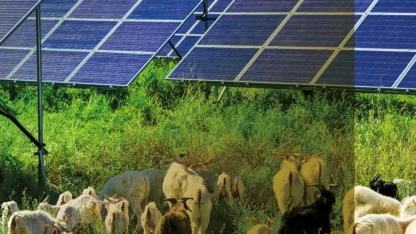In a recent ESIA webinar held on September 7th, an extensive analysis of crucial carbon footprint calculation methodologies, PEFCR and EPEAT, was presented. Organized by the European Solar Industry Alliance (ESIA), the webinar gathered more than 60 alliance members to explore the findings of a comprehensive study conducted by the esteemed German research center Fraunhofer ISE. This study meticulously compared and analyzed the Product Environmental Footprint Category Rules (PEFCR) and the Electronic Product Environmental Assessment Tool (EPEAT) – methodologies pivotal in shaping the future of the solar industry.
Understanding the Methodologies:
The primary objective of this study was to provide an understanding of the differences and impacts associated with each methodology. Focused on the EU Commission policymakers and European PV manufacturers, the analysis aimed to facilitate clear visualisation of the advantages and disadvantages linked with PEFCR or EPEAT. The study underlined the need for a methodology capable of driving sustainability and circularity, especially given the EU market’s projected growth to approximately 320 GW of Photovoltaic (PV) modules by 2025 and a further rise to around 600 GW by 2030.
In-Depth Methodology Assessment:
To evaluate these methodologies, a detailed life cycle assessment (LCA) of PV modules was undertaken. Both PEFCR and EPEAT underwent meticulous scrutiny, with a focus on their alignment with Ecodesign goals. This assessment aimed to determine whether EU PV manufacturers might find themselves in a vulnerable position based on the chosen methodology. The results revealed distinct advantages and disadvantages concerning the fulfillment of the Ecodesign Directive Goals within each methodology.
Key Findings and Challenges:
- Greenwashing Prevention:
- EPEAT demonstrated a low likelihood of greenwashing due to its reliance on national grid electricity (75%) and strict minimum requirements for module lifetime and degradation.
- PEFCR, with uniform standards of 30 years lifetime and 1% degradation for all modules, emphasized credibility of certificates and certifiers as key components.
- Market Entry Standards:
- Concerns were raised about the leniency of the existing market entry requirements established by the Ecodesign directive (25 and 18 g CO2-Eq./kWh). The discussion highlighted the balance between compliance and continual improvement.
Moving Forward:
With the study’s insights published and discussed, the conversation now returns to the Supply Chain working group of the alliance and its steering committee. The goal is to develop strategies that will not only restore Europe’s solar PV industry but also align it with the ambitious target of manufacturing 30GW of solar PV along the value chain in Europe by 2025.


